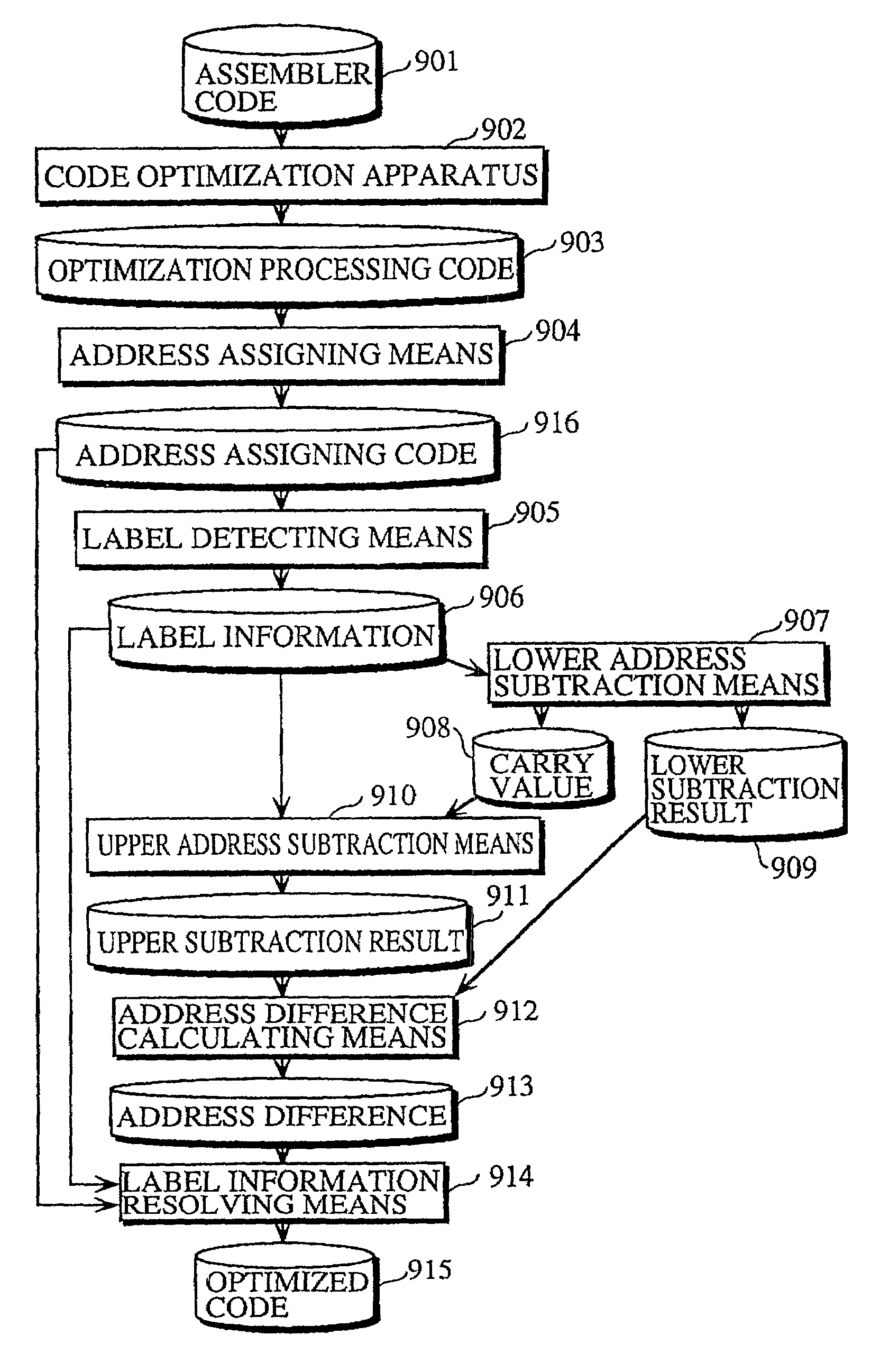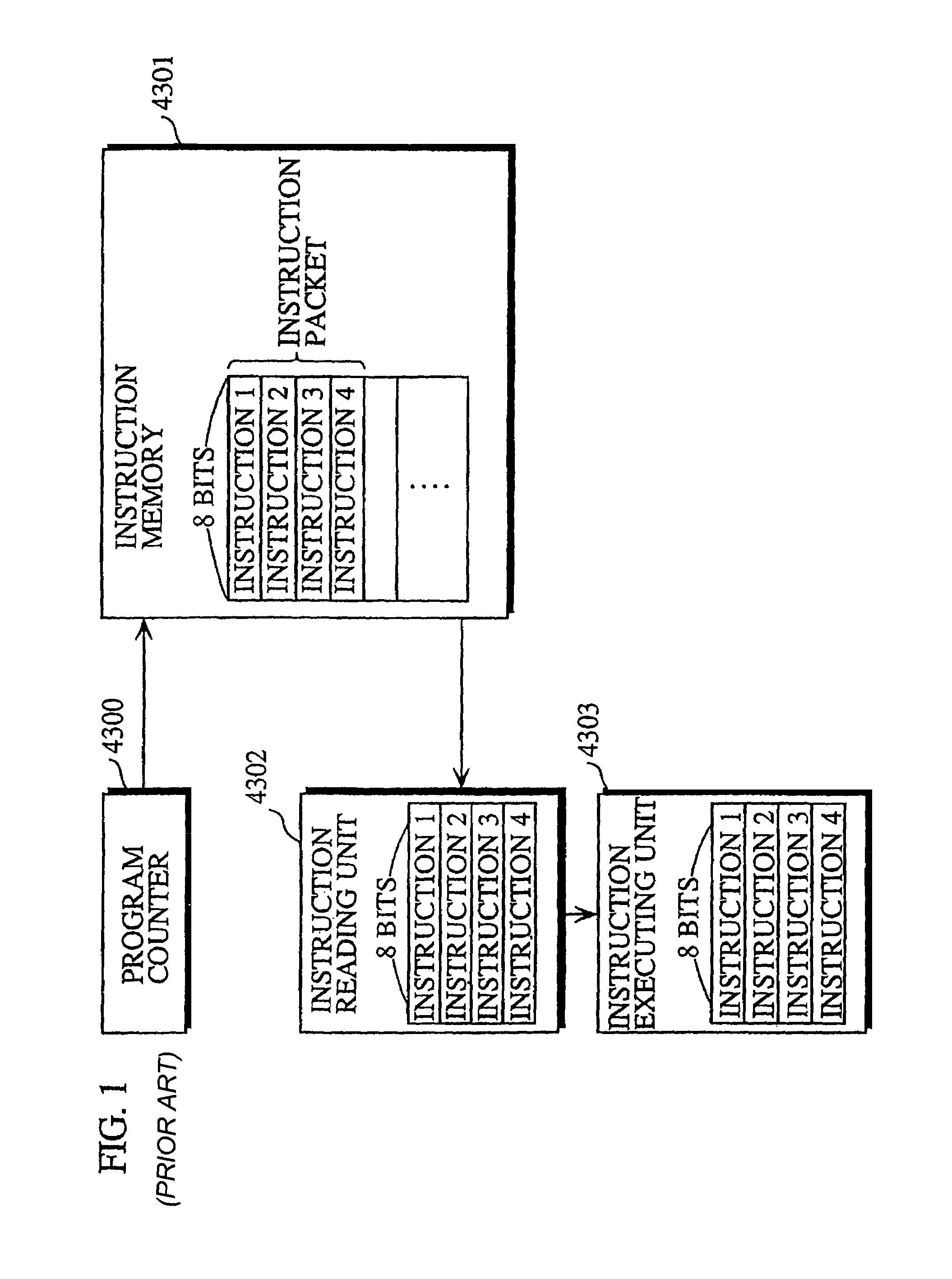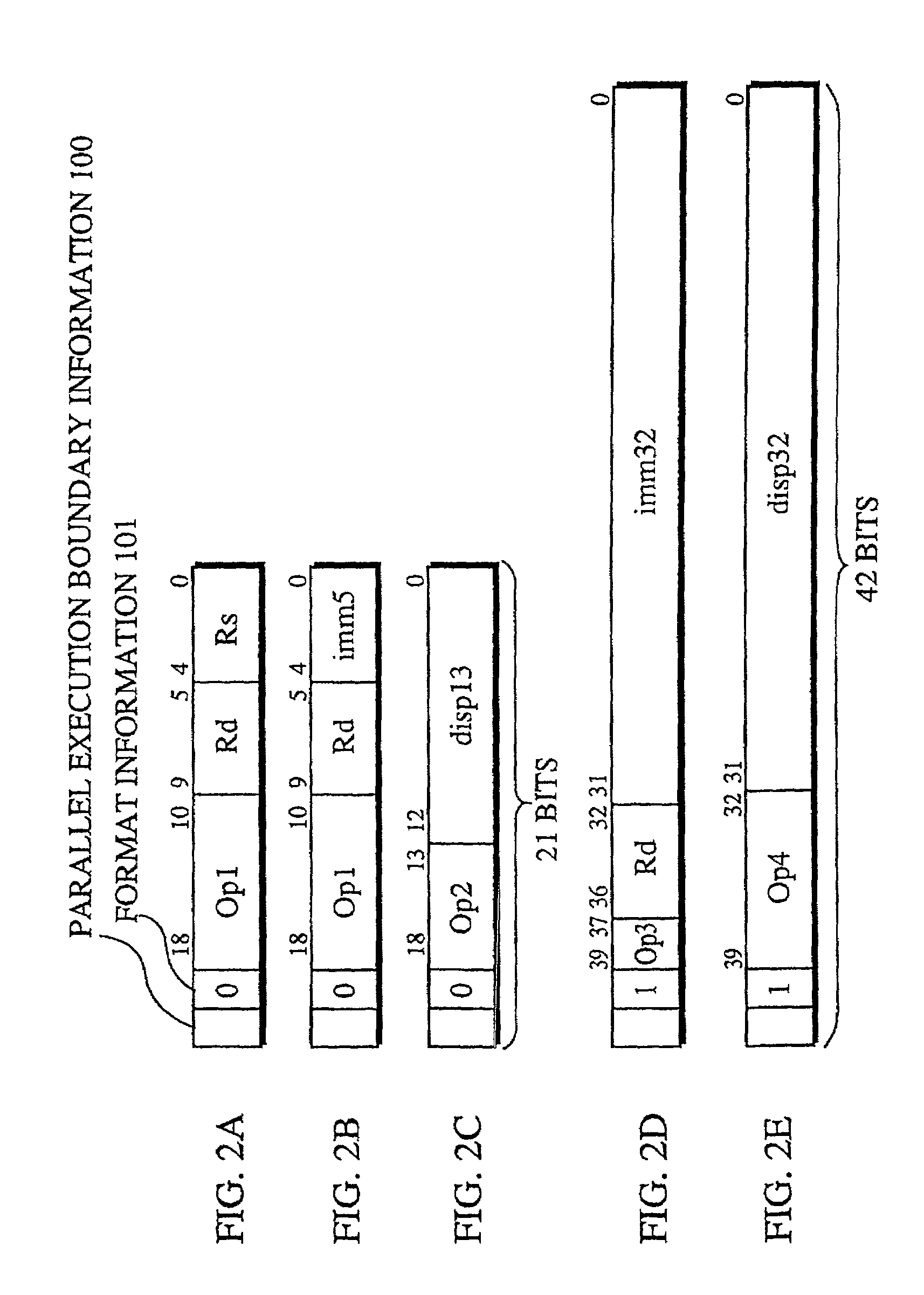Processor for executing instructions in units that are unrelated to the units in which instructions are read, and a compiler, an optimization apparatus, an assembler, a linker, a debugger and a disassembler for such processor
a technology of instructions and instructions, applied in the direction of next instruction address formation, program control, instruments, etc., can solve the problems of slow program execution and none of the instructions in the instruction packet can be executed
- Summary
- Abstract
- Description
- Claims
- Application Information
AI Technical Summary
Benefits of technology
Problems solved by technology
Method used
Image
Examples
first embodiment
[0135]This first embodiment relates to an optimization apparatus, an assembler, and a linker that generate programs where read operations and execute operations have different units, and to a processor for executing such programs.
Formats of the Instructions Executed by the Processor
[0136]The following explains the formats of the instructions executed by the processor of this first embodiment. These formats are shown in FIGS. 2A˜2E. The instructions executed by the present processor are constructed so that 21 bits is set as one instruction unit. For the present processor, there are both one-unit (i.e., 21-bit) and two-unit (i.e., 42-bit) instructions.
[0137]The format information 101 is written as one bit and shows the length of each instruction. When the format information 101 is “0”, this shows that the unit including this format information 101 forms one complete instruction, which is to say, a 21-bit instruction. When the format information 101 is “1”, this shows that the unit inc...
second embodiment
[0264]The second embodiment of the present invention relates to a modification of the processor, optimization apparatus, assembler, and linker of the first embodiment. This modification uses a different value as the PC relative value for resolving labels in branch instructions.
[0265]In the first embodiment, the PC relative value in a branch instruction is a difference in addresses between the branch instruction and the branch destination instruction, while in this second embodiment, the PC relative value in a branch instruction is a difference between the address of the branch destination instruction and the address of the first instruction in same set of instructions as the branch instruction.
[0266]In this way, the PC relative value has a slightly different meaning than in the present embodiment. However, if the devices used to generate a program (i.e., the optimization apparatus 303, assembler 305, and linker 307 that calculate the PC relative value) use the same meaning as the de...
third embodiment
[0274]The third embodiment of the present invention relates to a processor that can indicate the execution position of an instruction by fully utilizing the lower 3 bits of instruction addresses.
[0275]In the first embodiment, the lower 3 bits of the instruction address are used to indicate a position that is one of three units. In the present embodiment, however, full use is made of these 3 bits by having them indicate one of eight units.
[0276]FIG. 28A shows the construction of an instruction packet in the present embodiment. This instruction packet is composed of eight instruction units. Each instruction unit in an instruction packet is 8 bits long, so that the total length of one instruction packet is 64 bits. The processor in this embodiment reads one instruction packet (64 bits) in one cycle.
[0277]FIG. 28B shows the types of instructions used in this embodiment. Each instruction is composed of 8-bit instruction units, with there being one-, two-, three-, four-, five-, and six-un...
PUM
 Login to View More
Login to View More Abstract
Description
Claims
Application Information
 Login to View More
Login to View More - R&D
- Intellectual Property
- Life Sciences
- Materials
- Tech Scout
- Unparalleled Data Quality
- Higher Quality Content
- 60% Fewer Hallucinations
Browse by: Latest US Patents, China's latest patents, Technical Efficacy Thesaurus, Application Domain, Technology Topic, Popular Technical Reports.
© 2025 PatSnap. All rights reserved.Legal|Privacy policy|Modern Slavery Act Transparency Statement|Sitemap|About US| Contact US: help@patsnap.com



